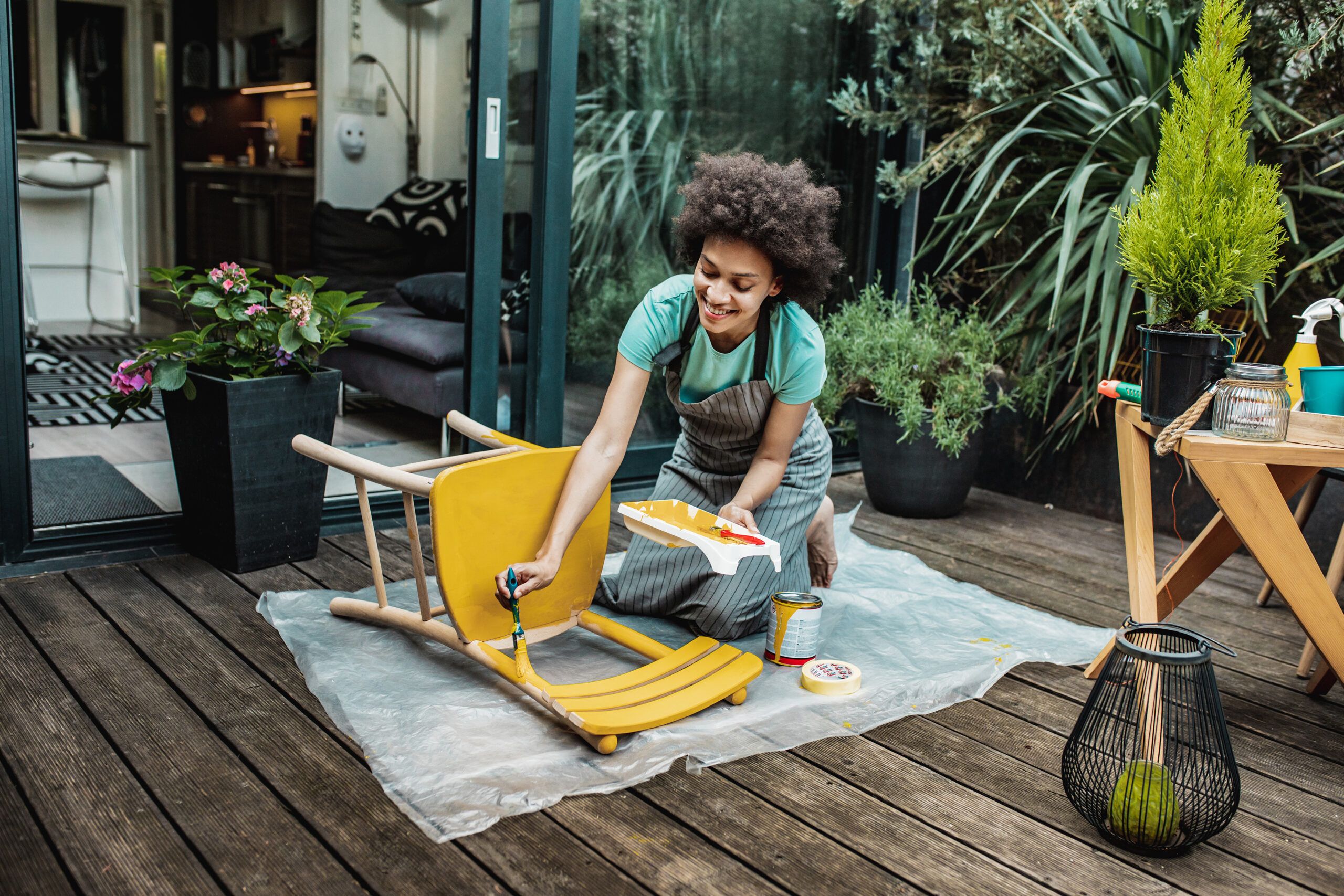Painting furniture can be a creative activity for a DIY enthusiast, whether you’re looking to breathe new life into an old piece or make a unique statement piece. In this article, we’ll explore 17 beautiful painted furniture ideas to give you helpful tips and provide you with inspiration for your own project.
1. Use Chalk Paint
Chalk paint is often a go-to option for DIYers because it’s so easy to use. The paint adheres to many different types of surfaces and allows you to create a matte finish that works well with glaze and stain. You can also use chalk paint with stencils and transfers for unique looks.
To use chalk paint, you have to choose a piece of furniture and clean it thoroughly. Apply the paint in thin, even coats and allow each layer to dry completely before adding the next. If you’re a fan of the distressed look, you can sand the edges and corners lightly after the final coat is dry. Finish with a clear wax to protect the paint.
2. Try Milk Paint
Milk paint is similar to chalk paint, but its formula is slightly different. It’s an eco-friendly paint that will give your furniture an old-world finish if you want a vintage or rustic look.
To create a distressed patina using milk paint, apply the paint in thin layers and allow it to dry almost completely. Then, use a scraper to add dings and chips to the surface. For a stripped effect, place tape on the near-dry milk paint and peel it off once fully dry. You can mix milk paint at home, so you have control over color creation.
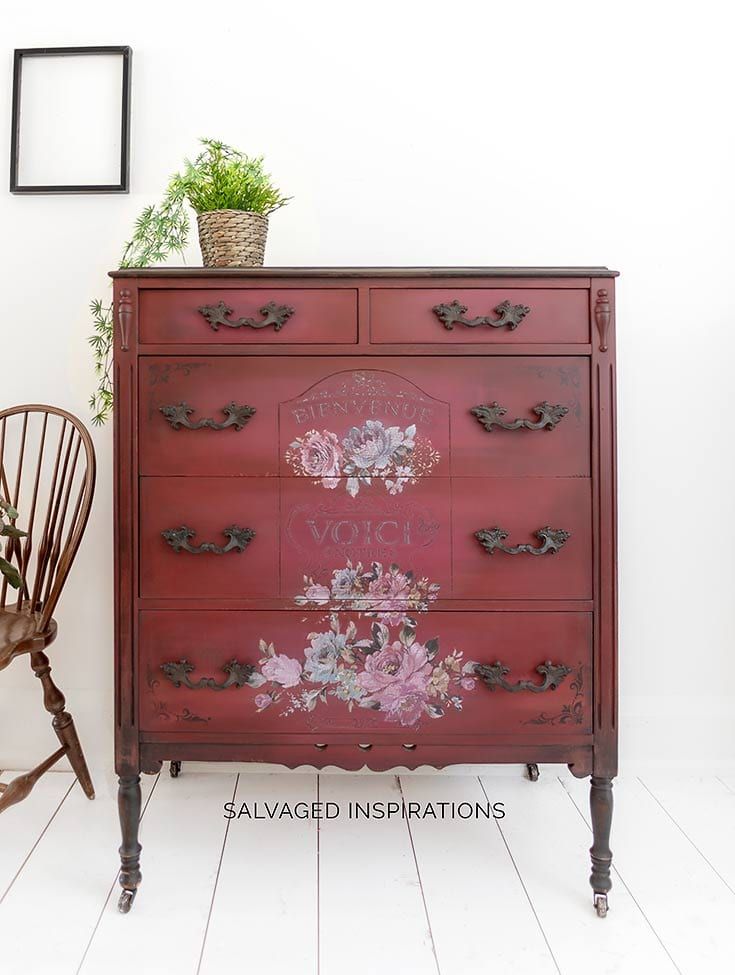
3. Paint Upholstered Furniture
Do you have an upholstered chair with an outdated pattern? Transform it with paint. This technique works best on furniture with tightly woven fabrics, such as cotton or linen.
To paint upholstered furniture successfully, follow these steps:
- Apply at least three coats to fully conceal the original pattern, but use more if you’re painting the piece from a dark color to a lighter one.
- Clean the piece thoroughly and vacuum to remove any dust or debris.
- Mist the upholstery with water to help the paint adhere better.
- Apply thin coats of fabric medium-mixed paint, working it into the fabric with a brush.
- Use a small brush to reach all nooks and crannies.
- Sand lightly between coats for a smoother finish.
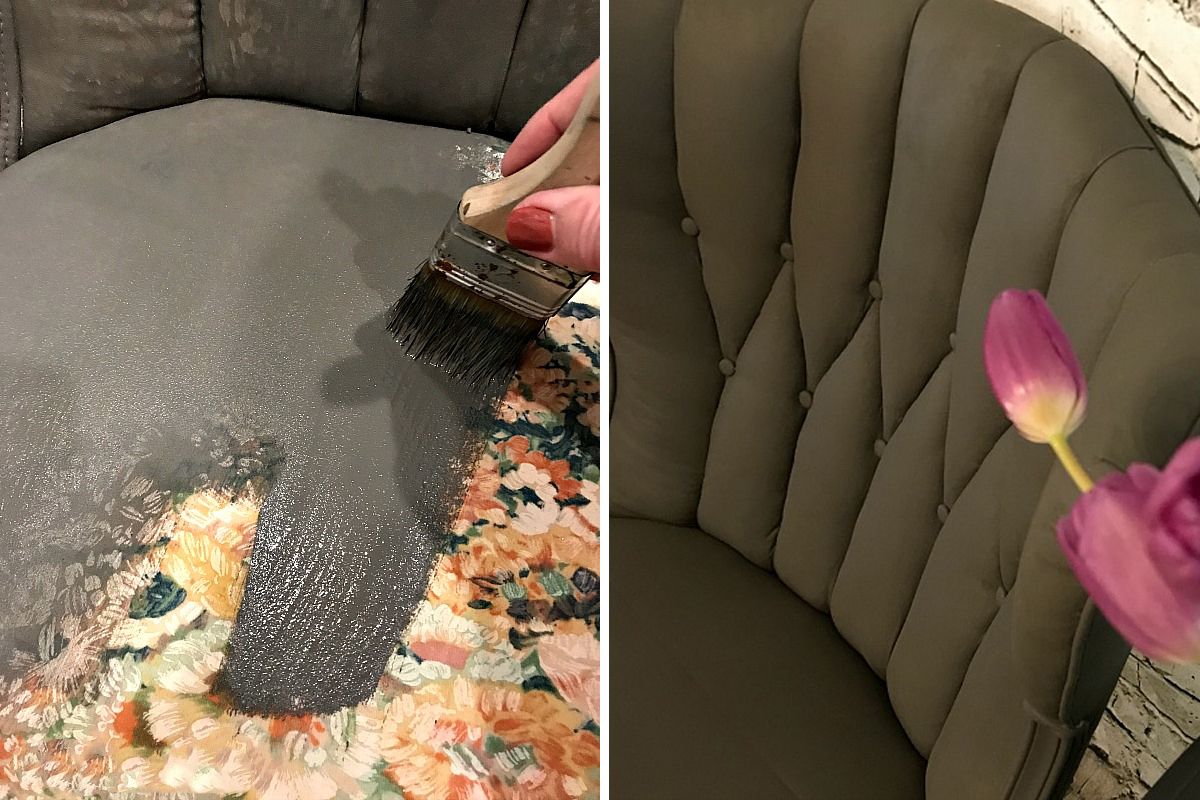
4. Try the “Pour-on” Method
The “pour-on” method creates a dazzling, abstract design that is similar to spin art. Since it’s an active pattern, consider using this technique on drawer fronts or small accent pieces. To achieve this look:
- Mix paint with water, topcoat, or thinner to create a runny consistency.
- Drizzle the thinned paint randomly onto the surface.
- Tilt and move the piece in different directions to spread and swirl the paint.
- Repeat with two or more colors for a more dynamic effect.
- Allow the paint to dry completely before sealing with a clear topcoat.
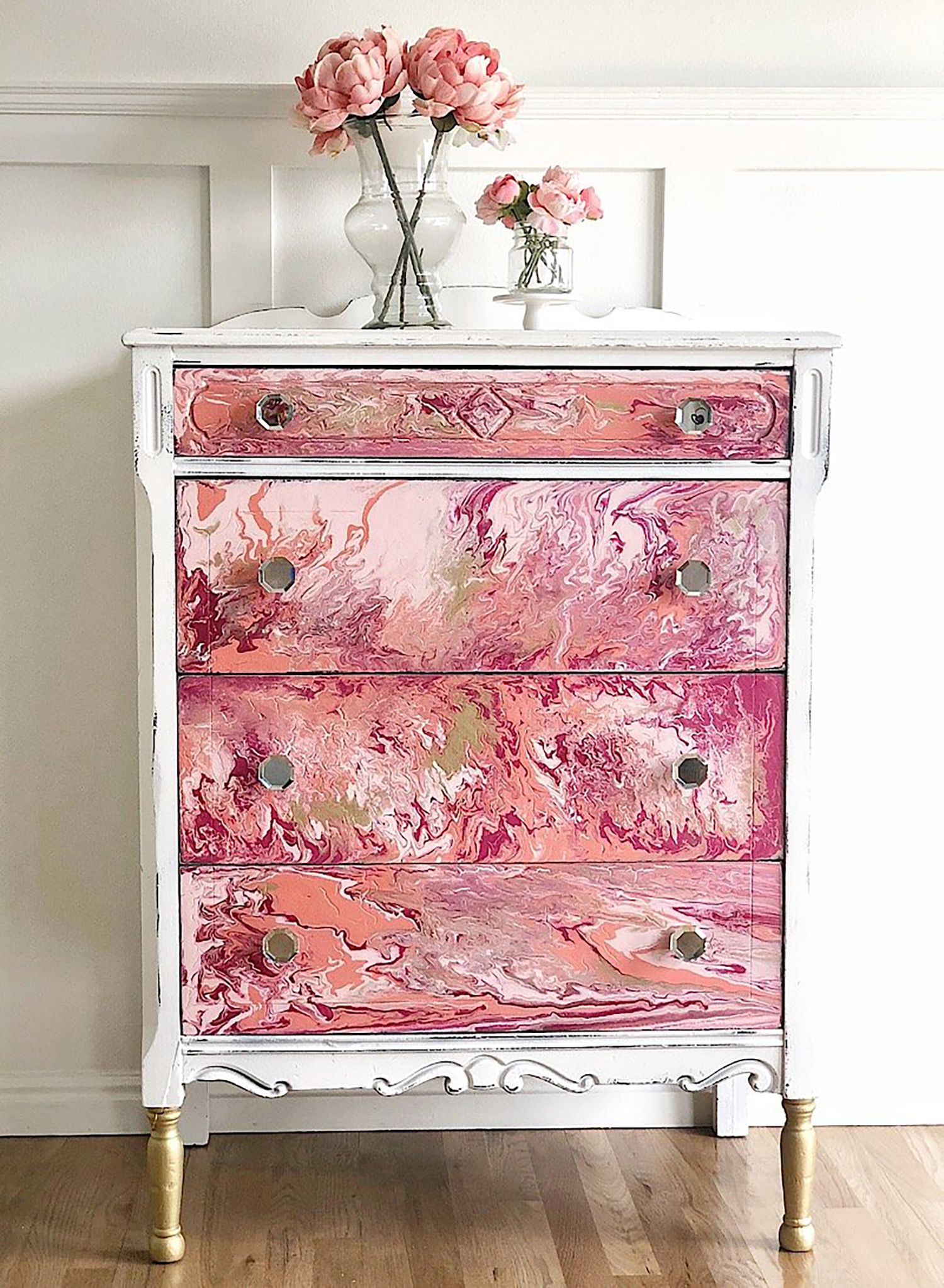
5. Paint Metal, Plastic, and Fiberboard
Don’t limit yourself to wooden furniture—you can also transform your metal, plastic, and fiberboard furniture.
For metal pieces, such as filing cabinets, use a primer specifically designed for metal surfaces before applying your chosen paint color.
On plastic or fiberboard, sand the surface lightly and use a paint formulated to adhere to these materials.
You can add a little flair to painted metal furniture by updating hardware or including decorative elements, such as tapered legs. This can turn a utilitarian piece into a stylish focal point in your home office or living space.
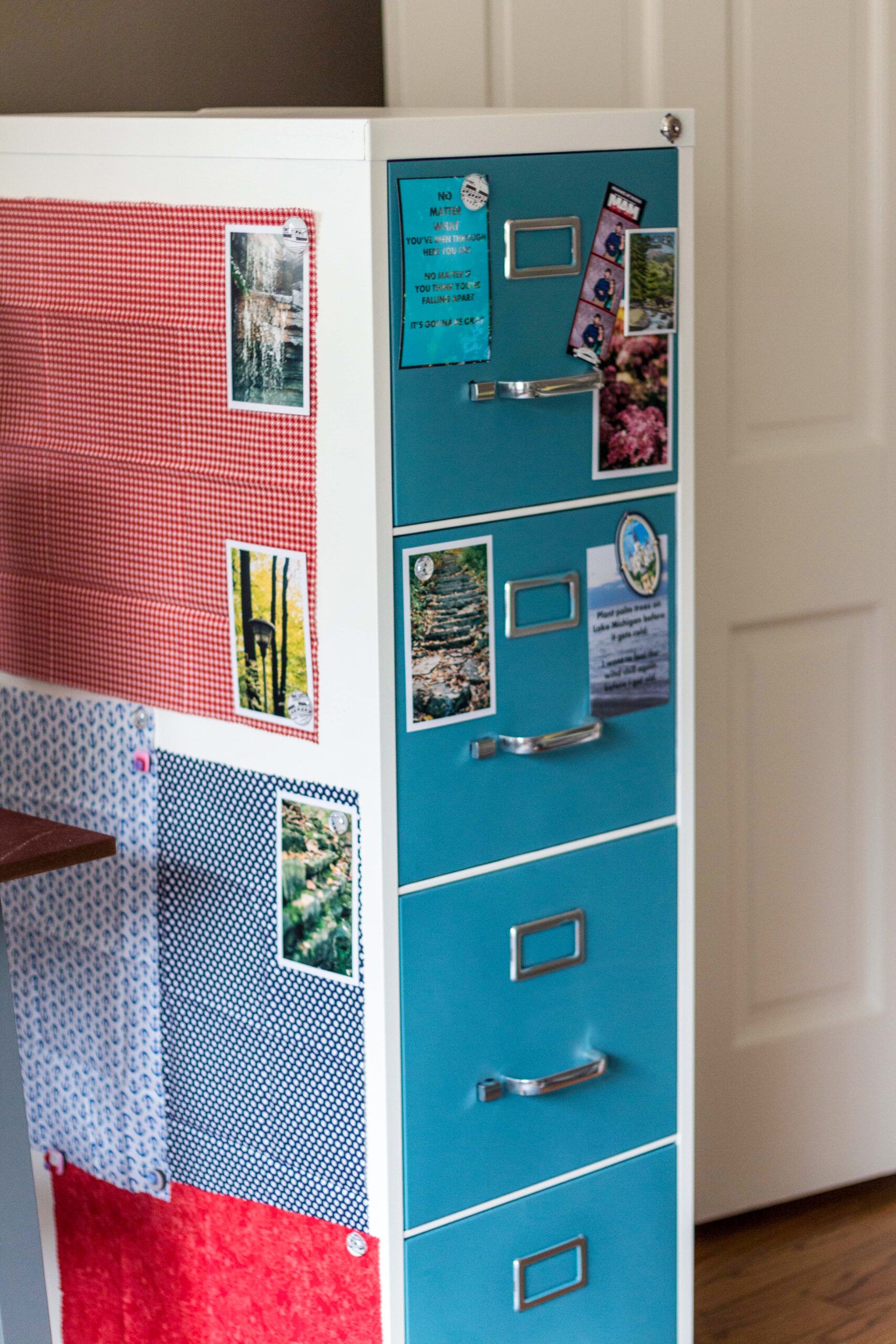
6. Color Wash Furniture
Color washing can add a subtle color to wood furniture while still allowing the natural grain to show through. This method works well on both raw wood and previously stained surfaces, so it can be used on a variety of projects.
To create a color wash:
- Thin chalk paint with water to create a translucent consistency.
- Brush the thinned paint onto the wood surface.
- Use a clean cloth to wipe off excess paint in the direction of the wood grain.
- Allow the first coat to dry, then repeat if desired for a more intense color.
- Seal the finished piece with wax or a clear topcoat for protection.
7. Achieve a Boat-Wood Effect
DIYers who want to infuse a beach and nautical theme in their home decor can use the boat-wood effect to create a weathered, coastal-inspired look. This technique works well on smaller pieces, such as end tables and trunks. You’ll layer multiple colors of paint and strategically distress the surface to mimic the appearance of reclaimed wood from old fishing boats.
To achieve this effect:
- Apply a base coat in your chosen color and allow it to dry completely.
- Layer on additional colors and be sure to focus on areas that would naturally show wear.
- When the paint is about 90% dry, use a scraper or sandpaper to reveal portions of the underlying colors.
- Seal the finished piece with a matte clear coat to protect the distressed finish.
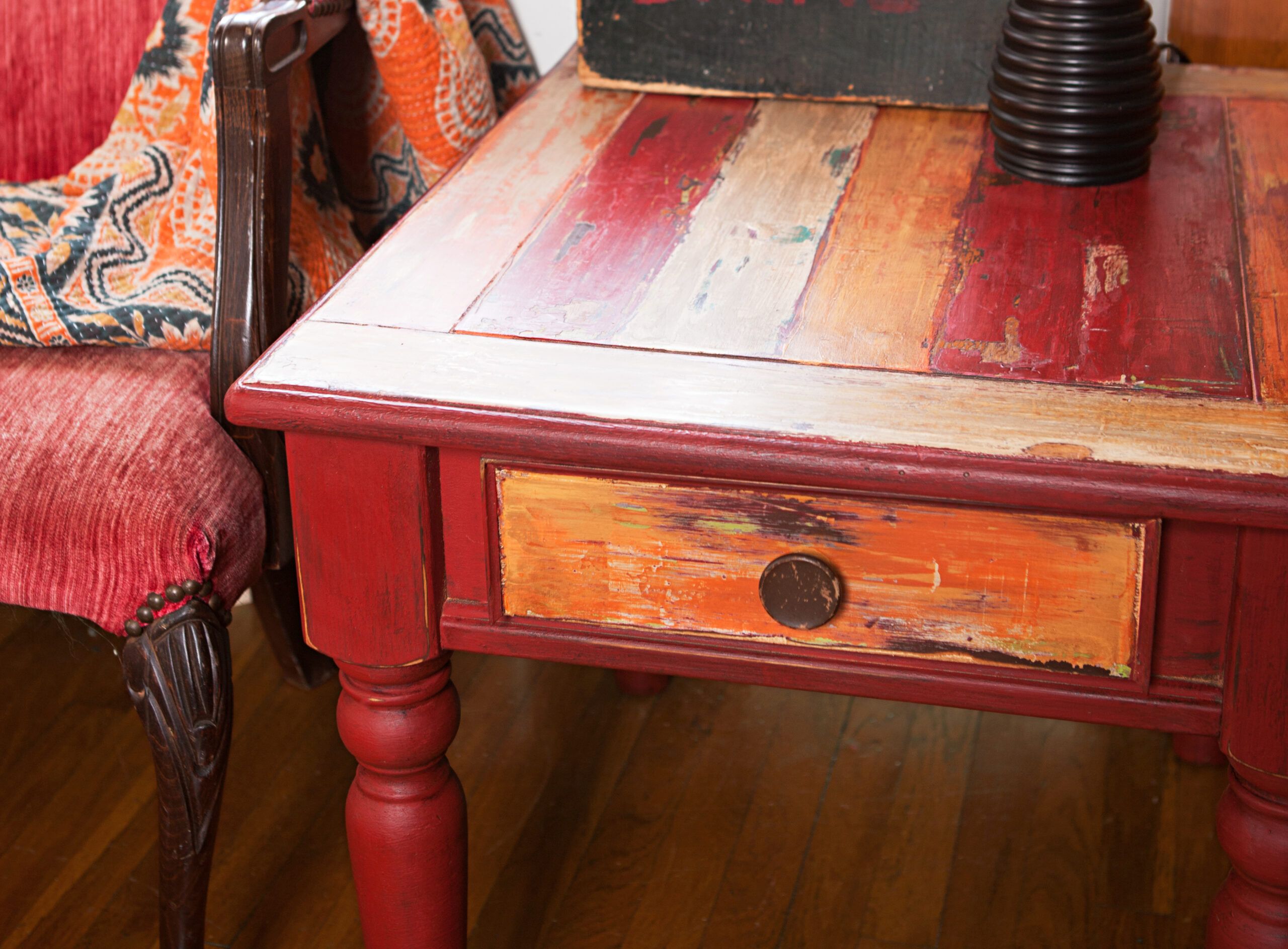
8. Memphis Style Furniture Painting
The Memphis Milano movement is known for its bold colors and asymmetrical shapes, and it’s made quite a comeback in recent years. Create a statement piece that will add a pop of color and personality to your space.
To create a Memphis-inspired piece:
- Choose a piece of furniture with simple lines, such as a sideboard or dresser.
- Select a palette of bright, contrasting colors like neon pink, acid green, and primary hues.
- Sketch your design in chalk on the furniture surface.
- Apply painter’s tape for clean lines.
- Paint each section with your chosen colors.
- Add geometric shapes or patterns to add some visual interest.
9. Create Faux Marble Furniture Surfaces
Natural stone is elegant but can be expensive and heavy. You can recreate the look at a fraction of the cost and weight with faux marble finishes. Use this method on tabletops, side tables, or even larger pieces, such as a dresser.
To create a faux marble effect:
- Paint the surface with a white base coat and allow it to dry.
- Mix various shades of gray paint to mimic the veining in real marble.
- Use a cotton rag or sock to dab and swirl the gray shades onto the white base while it’s still slightly wet.
- Blend the colors gently to create a natural-looking pattern.
- Once dry, seal the surface with a high-gloss clear coat for a realistic marble sheen.
10. Paint Wrought Iron Furniture
You can transform your wrought iron furniture with paint so that it fits your decor, no matter the style. For a feminine touch in a bedroom, consider painting an iron bed frame in a soft, pastel hue. Use water-based acrylic paint for best results because it dries quickly and resists cracking and chipping once cured.
Before painting:
- Clean the iron thoroughly. Try trisodium phosphate if you need to remove tough grime.
- Sand any rough spots and wipe away dust.
- Apply a metal primer for better paint adhesion.
- Paint in thin, even coats, allowing each layer to dry completely.
- Finish with a clear sealer for added protection.
11. Decoupage Furniture
If you’re looking for something a little different, decoupage can give you a personalized touch. This method combines paint with decorative paper cutouts. You can transform a simple furniture piece, such as bookshelves or side tables, into eye-catching accents.
To decoupage furniture:
- Paint the piece with a base color and allow it to dry completely.
- Cut out designs from decorative paper or use pre-made decoupage paper.
- Apply decoupage medium to the back of the paper cutouts and carefully position them on the furniture.
- Smooth out any air bubbles and allow the paper to dry.
- Seal the entire piece with additional layers of decoupage medium for a durable finish.
12. Create a Weathered Paint Look
If you’ve found the perfect new furniture piece but want it to fit into your farmhouse or rustic decor, you can create a weathered paint. Use chalk or milk paint to get this effect.
To create a weathered look:
- Apply a base coat in your chosen color and allow it to dry.
- Add a second coat in a contrasting color.
- Once nearly dry, use a scraper or sandpaper to distress areas where natural wear would occur.
- For outdoor pieces, seal with hemp oil instead of wax for better weather resistance.
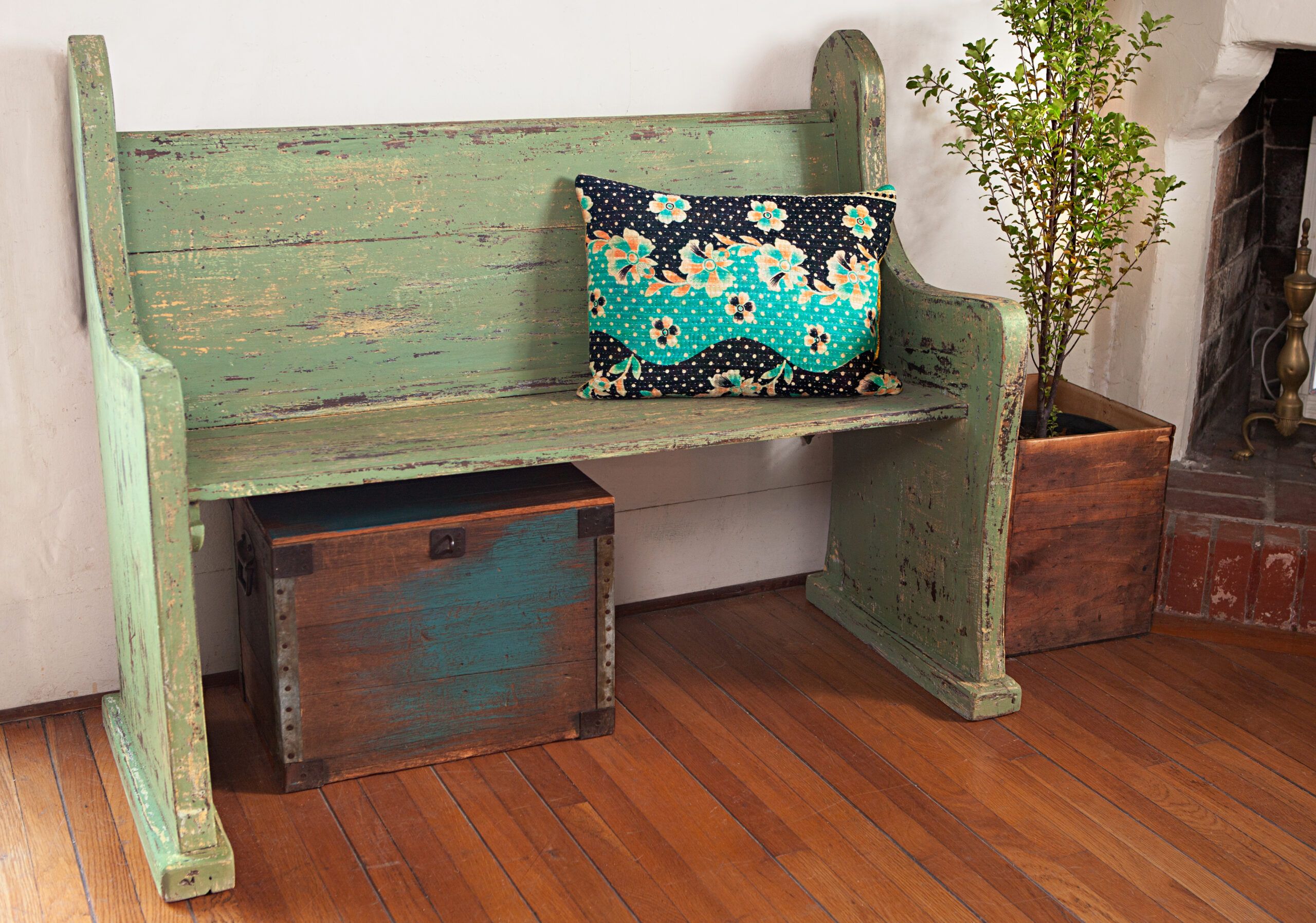
13. Paint Plastic Outdoor Furniture
By painting your plastic outdoor furniture, you’ll extend its life and refresh your outdoor space. Choose a paint specifically formulated for plastic surfaces so that it remains for years to come.
Before painting:
- Clean the furniture thoroughly and allow it to dry completely.
- Sand the surface lightly to improve paint adhesion.
- Apply thin, even coats of paint, allowing each layer to dry between applications.
- Consider using spray paint for a smooth, even finish on intricate pieces.
14. Paint Picture Frames
To create an impressive gallery wall, paint a collection of different size and style frames in the same shade. A single color lends cohesion and helps draw the eye from one picture to the next.
To paint picture frames:
- Remove the backing, glass, and artwork from each frame.
- Sand the frames lightly and wipe clean to remove dust.
- Apply thin coats of paint, allowing each layer to dry completely.
- Reassemble the frames once the paint is fully cured.
15. Spray Paint Wood Furniture
If the wooden spindle chairs in your dining space need a makeover but poking around all those slender pieces with a brush seems daunting, reach for spray paint instead. It gets into all those crevices, creating a smooth, even finish that’s difficult to achieve with a brush.
Tips for spray painting wood furniture:
- Work in a well-ventilated area or outdoors on a calm day.
- Clean and sand the furniture before painting.
- Apply a primer designed for wood surfaces.
- Use long, sweeping motions to apply thin, even coats of paint.
- Allow each coat to dry completely before adding the next.
16. DIY Distressed Furniture
Distressed furniture adds character and charm to any room. It can hide minor scratches and dings that occur naturally, so it’s a useful decor option in a child’s bedroom or playroom where furniture wears out quickly.
To create a distressed finish:
- Apply a base coat of paint and allow it to dry completely.
- Add a top coat in a contrasting color.
- Once dry, sand or scrape random areas to reveal the base coat.
- Focus on edges and corners where natural wear would occur.
- Seal the piece with wax or a clear topcoat for protection.
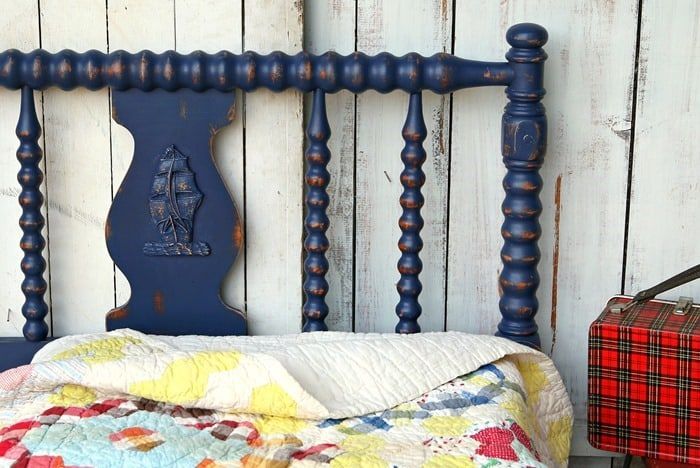
17. Paint Furniture to Match Decor
Coordinating furniture with your existing décor can create a cohesive, stylish look in any room. You can paint an accent piece to complement your color scheme. Pick out a color that matches the room’s lighting and existing color palette to ensure a harmonious result.
Consider some of these popular interior paint colors for furniture:
- Aqua for a fresh, coastal vibe
- Pale apricot for a gender-neutral nursery option
- Plum for a rich, sophisticated look
- Saffron yellow for a warm, inviting feel
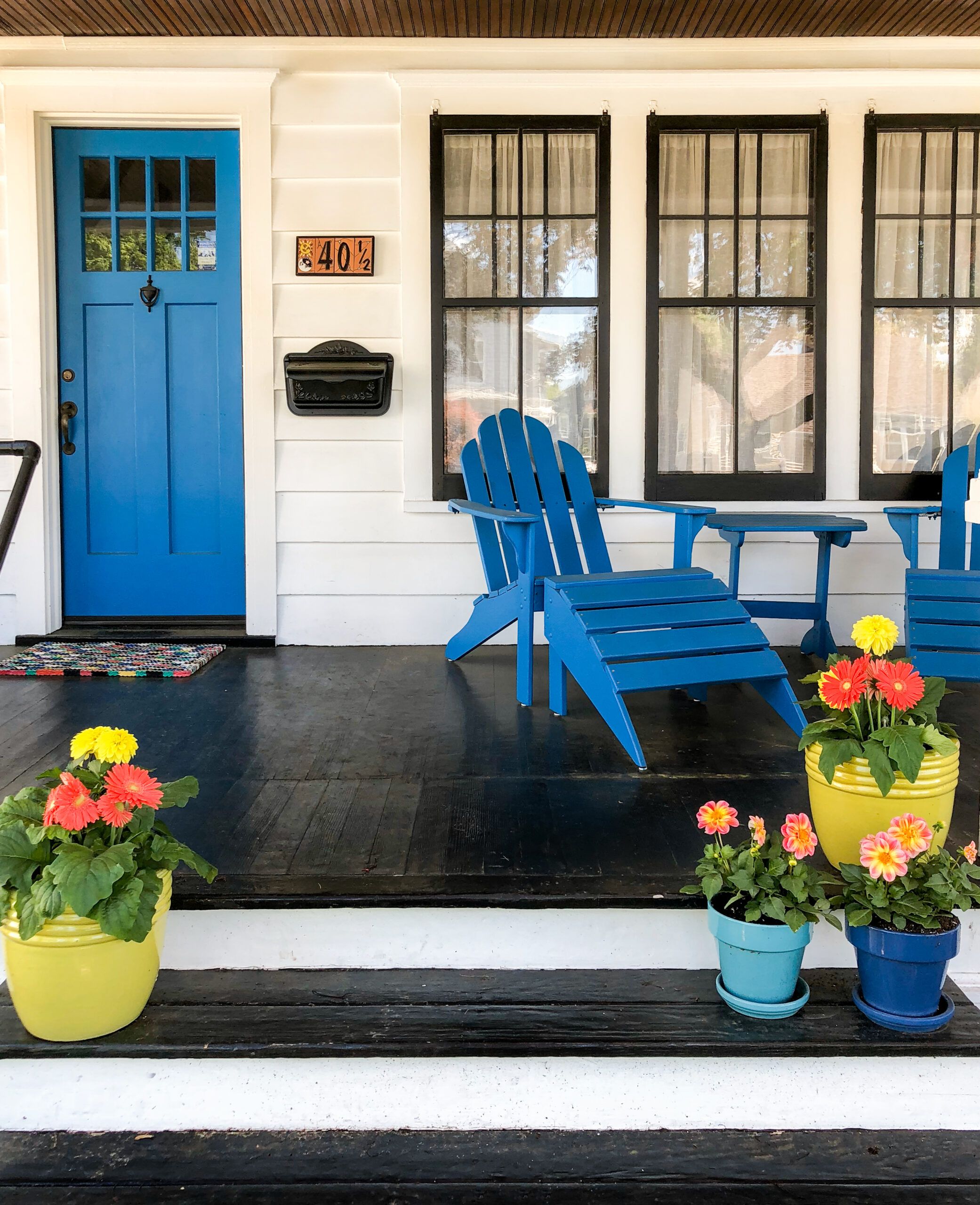
Our Conclusion
Painting your furniture creates endless decor possibilities. From a sleek, modern look to a weathered, vintage feel, there’s a painting technique to suit any style. Remember to prepare your furniture before you start any project so that your paint job remains for years to come.
